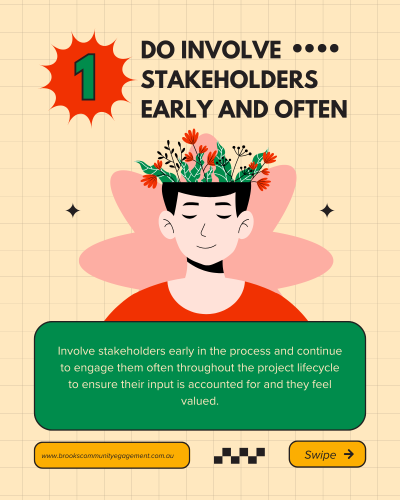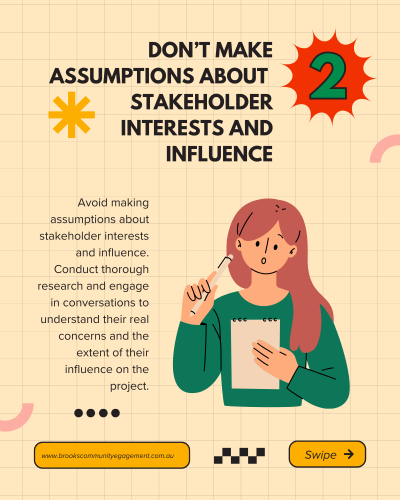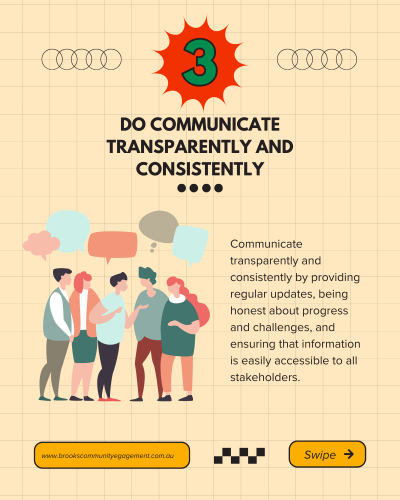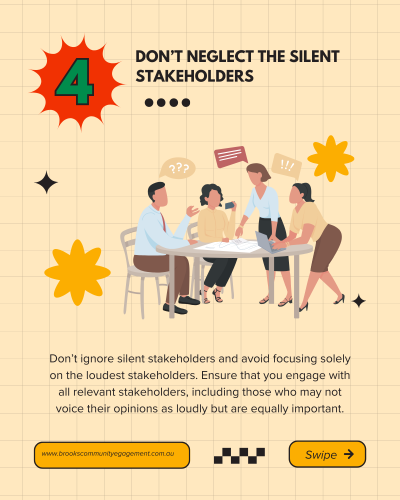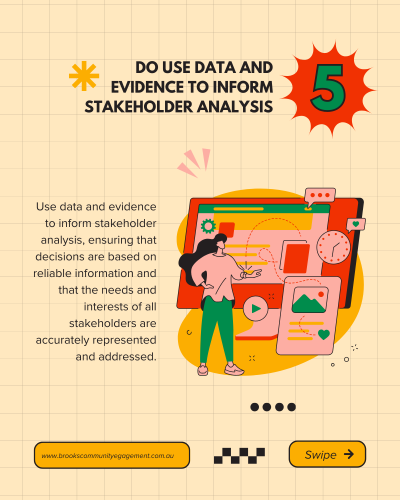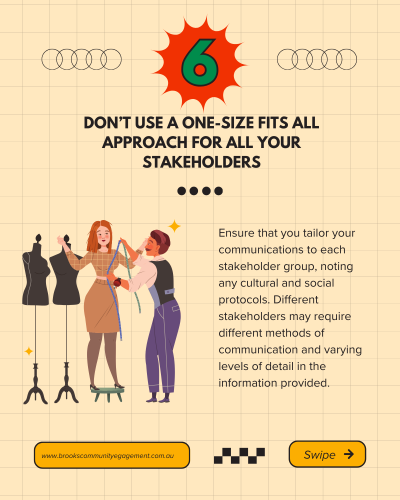Who Are My Stakeholders? Do’s & Don’ts of Stakeholder Mapping
What is Stakeholder Mapping?
Stakeholder mapping is a process of identifying, analysing, and ranking relevant individuals and organisations who either hold an interest in or influence over a project or decision. Depending on your project, your list of stakeholders might include local residents and businesses, government officials, local community groups, media organisations, and internal staff.
Stakeholder mapping helps you identify these key stakeholders, understand their interests, aspirations, or influence, and develop a strategy for stakeholder management. By taking the time to map out all relevant stakeholders, you can strategically tailor your engagement methods to effectively deliver key messages and align your strategies with their interests and needs.
Without understanding who your key stakeholders are, it is difficult to develop effective strategies for how to build strong relationships and involve your community in your project or outcome. Effective stakeholder mapping ensures that all voices are heard, not just the loudest voices in the room.
Steps to Effective Stakeholder Mapping
Before you begin brainstorming your stakeholders, ensure that you clarify the purpose of your engagement.
This will inform who is and who isn’t a relevant stakeholder.
Think carefully about everyone potentially involved at every stage of the process—both internal and external stakeholders.
There are several methods that you can use to visually represent your list of stakeholders.
Grid Stakeholder Map – Best for large projects, a grid stakeholder map allows you to see all relationships at a glance and identify potential conflicts early on. It is also a great space to store key information such as contact details, descriptions, and notes on engagement conducted.
Network Diagram – Best for smaller projects, a network diagram is great for visualising relationships between stakeholders, and how they might be impacted by changes throughout the process.

Mendelow’s Power/Interest Matrix divides stakeholders into four quadrants based on levels of power (influence) and interest.
As the matrix shows, individual stakeholders can fall into four categories:
- High power, high interest (Manage Closely)
- High power, low interest (Keep Satisfied)
- Low power, high interest (Keep Informed)
- Low power, low interest (Monitor)
By completing this exercise, you can understand how each stakeholder could impact your project and determine the appropriate method for stakeholder communications for each one.
Creating engagement strategies for each category on the power-interest matrix involves tailoring communication and involvement to suit the different levels of power and interest of stakeholders.
High Power, High Interest:
- Face-to-Face Communication: Schedule regular meetings, both one-on-one and in small groups, to discuss project updates, gather feedback, and address concerns. Building trust with these stakeholders is crucial.
- Early Involvement: Engage these stakeholders early in the project to ensure their input is considered in decision-making processes.
- Detailed Information: Provide comprehensive information, including detailed reports, project plans, and data analysis, to satisfy their interest and need for in-depth understanding.
- Feedback Loop: Create mechanisms for continuous feedback, such as dedicated channels for communication, surveys, and suggestions.
High power, low interest (Keep Satisfied)
- Executive Summaries: Provide high-level updates and executive summaries that highlight key points, ensuring these stakeholders are informed without overwhelming them with details.
- Periodic Updates: Schedule less frequent but regular updates to keep them satisfied and aware of major milestones and outcomes.
- Benefit Emphasis: Highlight the benefits and positive impacts of the project relevant to their interests to maintain their support and satisfaction.
- Selective Involvement: Involve them in decision-making processes only when their input is critical, respecting their time and level of interest.
Low power, high interest (Keep Informed)
- Regular Updates: Use newsletters, emails, and project websites to provide regular updates and detailed information about project progress.
- Accessible Information: Ensure that detailed reports, minutes from meetings, and other relevant documents are easily accessible.
- Educational Materials: Provide educational resources and training sessions to help them understand the project better and its implications.
- Active Listening: Demonstrate that their input is valued by actively listening and responding to their feedback and questions.
Low power, low interest (Monitor)
- Minimal Updates: Provide occasional and concise updates to keep them informed without overwhelming them. This could be through quarterly newsletters or brief email updates.
- General Overviews: Share general overviews and high-level summaries of the project status, focusing on major achievements and milestones.
- Reactive Communication: Maintain a reactive communication stance, being available to answer questions or provide additional information if requested by these stakeholders.
- Awareness Campaigns: Use simple awareness campaigns to keep them in the loop and ensure they are not caught off guard by any project developments that might indirectly affect them.
Do’s and Don’ts of Stakeholder Mapping
Ready to take your stakeholder engagement to the next level? Contact us for expert guidance on stakeholder mapping and analysis to ensure your project’s success.
Let’s connect and make your engagement strategy robust and inclusive!
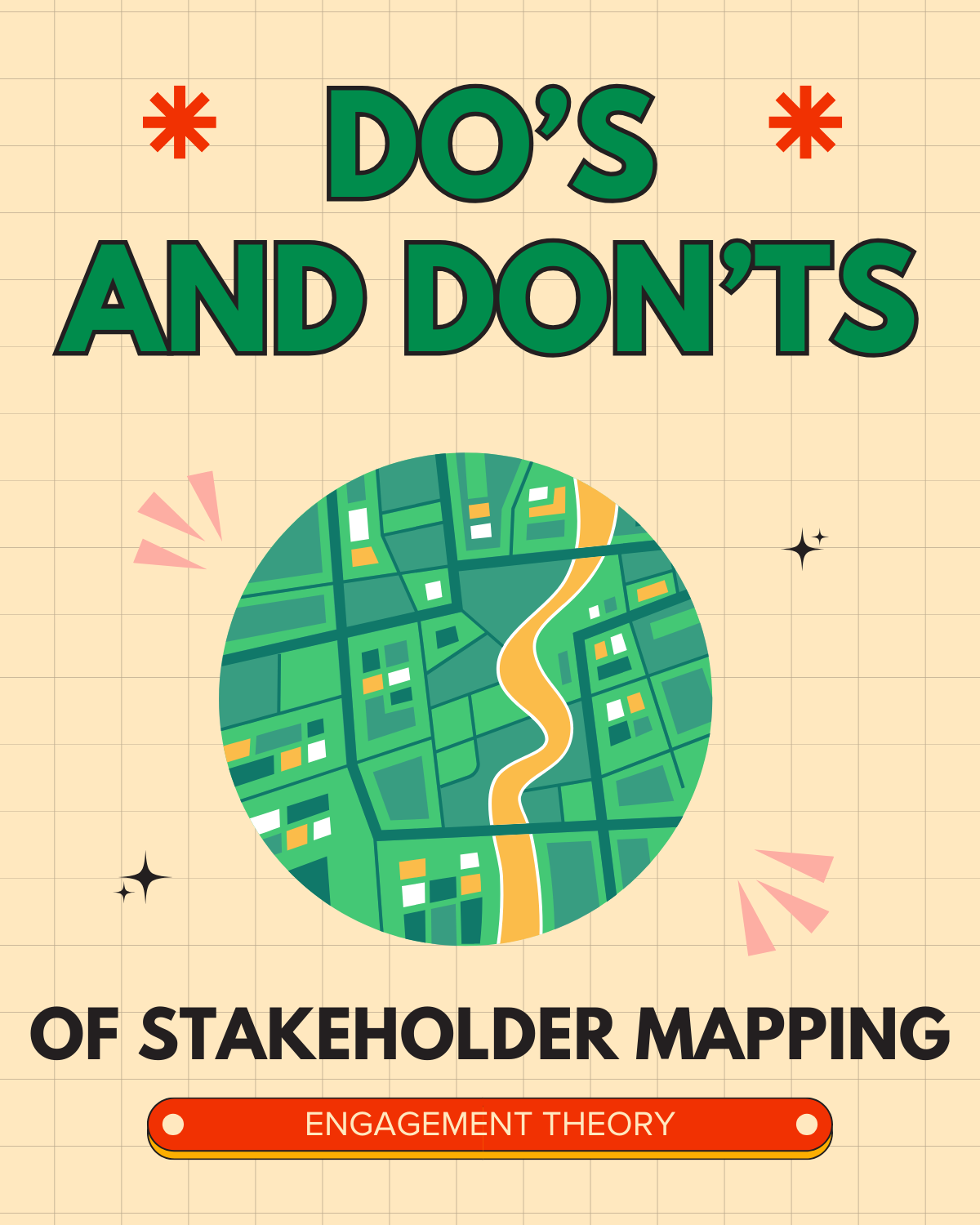
Resources
Build your stakeholder engagement map with these online tools.

